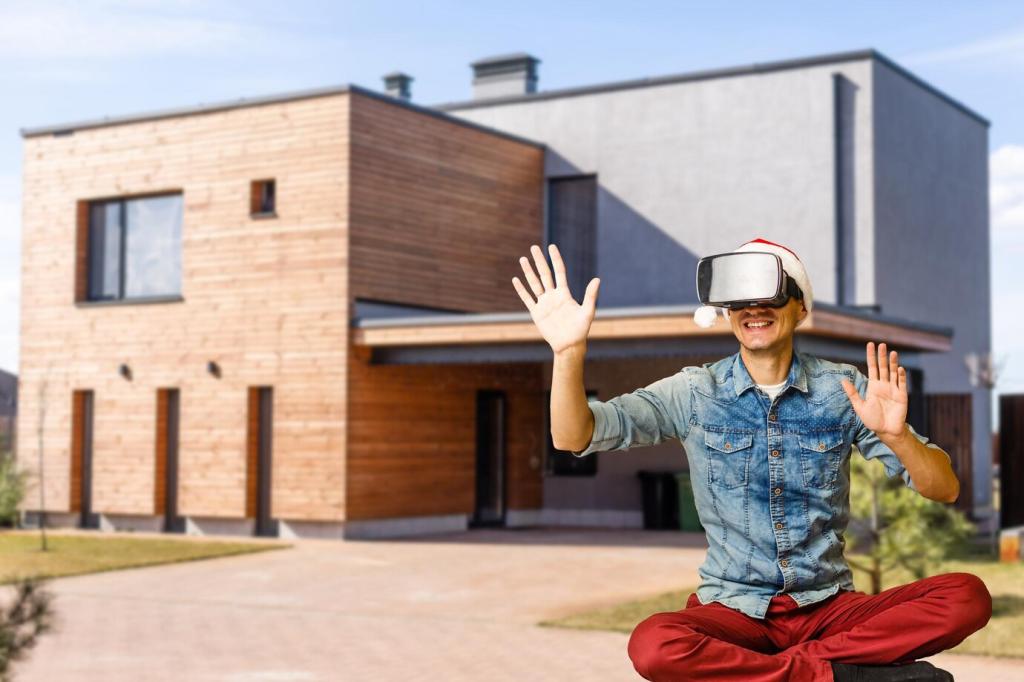
Affordable VR Solutions for Interior Designers
Affordable VR solutions are rapidly transforming the way interior designers visualize, present, and adapt their creative visions. Harnessing the power of virtual reality technology, professionals in the interior design industry can showcase intricate designs and immersive experiences to clients without incurring the hefty expenses once associated with advanced visualization tools. By leveraging cost-effective VR options, interior designers find themselves empowered to improve client communication, streamline workflows, and deliver stunning, interactive projects that stand out in a competitive market.
Revolutionizing Design Presentations
Interactive Client Walkthroughs
One of the most impactful benefits of affordable VR is the ability to provide clients with detailed, interactive walkthroughs of a proposed space. Rather than relying solely on flat renderings or mood boards, designers can guide clients through a virtual environment that accurately reflects scale, lighting, and layout. This hands-on experience gives clients a true sense of spatial relationships and encourages them to express preferences or suggest changes on the fly. The collaborative energy produced in these sessions translates into faster approvals and fewer revisions, optimizing the entire design process.
Real-Time Design Adjustments
Affordable VR platforms offer real-time design manipulation, allowing for immediate changes to be made during client presentations. Whether swapping colors on a feature wall, repositioning furniture, or altering materials, these instant adjustments enable clients to see the direct impact of their choices. This level of interactivity not only reduces the guesswork typically associated with interpreting design concepts but also increases satisfaction by ensuring the end result aligns perfectly with the client’s expectations. As a result, designers establish trust and foster long-term relationships rooted in innovation and responsiveness.
Enhanced Visualization for Small Budgets
Designers working with smaller budgets often found advanced visualization tools out of reach. The emergence of budget-friendly VR solutions has leveled the playing field, making sophisticated design visualization accessible to independent professionals and small studios alike. Affordable VR does not mean a sacrifice in quality; it allows designers to deliver presentations with a wow factor while staying within financial constraints. The combination of affordability and immersive capability provides significant value, opening up new opportunities to attract and win projects that might previously have been unattainable.
Simplified Collaboration with Stakeholders
Collaboration among designers, clients, architects, and contractors is often complicated by miscommunications or unclear plans. Integrating affordable VR tools enables all parties to experience a unified vision within a shared virtual space, regardless of their physical location. Clear, immersive visualizations ensure that everyone is aligned on design details and expectations, reducing the likelihood of misunderstandings or mistakes down the line. The ability to collectively review and refine designs in real-time significantly boosts both teamwork and the overall quality of the finished project.
Streamlined Project Revisions
Interior design projects often evolve as new ideas emerge or requirements shift. With affordable VR solutions, making revisions is no longer a time-consuming or expensive endeavor. Designers can efficiently modify virtual environments as feedback is received, instantly updating layouts, materials, and finishes. This rapid revision capability means that projects can proceed smoothly without waiting for static renderings or physical models, saving both time and resources. Streamlined revision processes benefit everyone involved by ensuring that deliverables are both precise and timely.
Accelerated Approval Processes
Affordable VR dramatically accelerates the client approval process by offering clear, tangible previews of proposed designs. Instead of relying on verbal descriptions or two-dimensional images, clients can thoroughly explore and understand the space in question. This deeper engagement leads to faster decision-making, as clients are more confident in their choices and less likely to request additional clarifications or changes. The end result is a reduction in project delays and increased client satisfaction, making affordable VR an invaluable tool for both designers and their clients.
Previous slide
Next slide

Cost-Effective Tools and Platforms
Popular Standalone VR Headsets
Recent advances in standalone VR headsets, such as those that do not require a tethered computer, have made immersive experiences more affordable and user-friendly. These lightweight, portable devices provide ample performance for design visualization at a fraction of the cost of high-end systems. Such headsets allow interior designers to take VR presentations directly to client sites or showcase ideas efficiently in small studio environments. The accessibility and ease of use of these devices eliminate many logistical and financial barriers, making VR integration seamless and straightforward.
Accessible Software Solutions
Software developers have responded to the demand for affordable VR by releasing user-friendly applications specifically tailored to interior design. These platforms often feature intuitive drag-and-drop interfaces, pre-built asset libraries, and cloud-based collaboration tools. They are designed to cater to professionals with varying levels of technical expertise, allowing designers to create and share immersive presentations quickly and effectively. Most importantly, licensing models and subscription tiers are scaled to the budgets of small and mid-sized firms, ensuring that the technology remains within reach.
Entry-Level VR Bundles for Studios
Recognizing the needs of budget-conscious interior designers, many providers now offer bundled packages that include both hardware and software at reduced rates. These entry-level VR bundles typically contain all necessary components for getting started, such as headsets, controllers, and design software, along with comprehensive support and training resources. By removing the complexity and guesswork associated with assembling a VR kit, these bundles streamline the adoption process and allow studios to focus on the creative aspects of their work. This strategic packaging further reduces initial investments while maximizing value for money.
